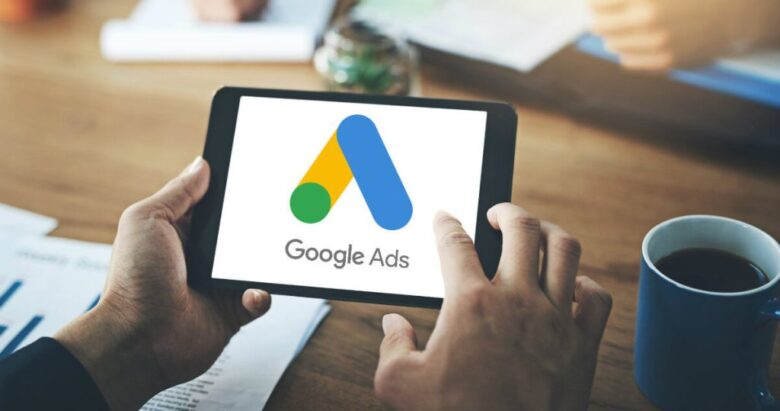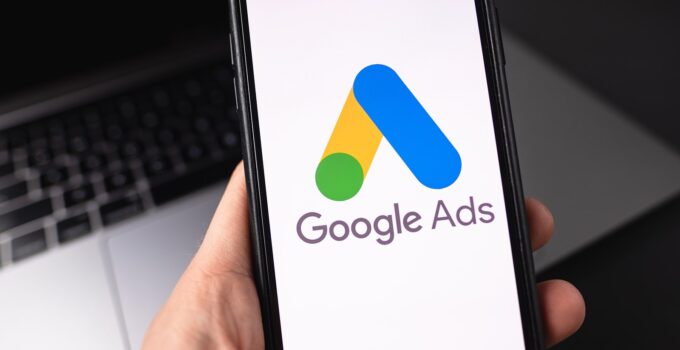In today’s digital world, advertising has transcended traditional media, making its way into the dynamic realms of the internet. Among the myriad of platforms available for digital marketing, Google Ads stands out as a powerful tool for businesses and individuals. This beginner’s guide is tailored to demystify the intricacies of Google Ads and provide a roadmap for crafting successful campaigns.
Understanding The Google Ads Platform

Source: arabinfotechllc.com
Before diving into campaign creation, it’s crucial to comprehend what Google Ads is and how it functions. Essentially, Google Ads is Google’s advertising platform, where advertisers bid to display service offerings, brief advertisements, product listings, or videos to web users. It can place ads both in the results of search engines like Google Search and on non-search websites, mobile apps, and videos.
Setting Up Your First Campaign
Setting up your first Google Ads campaign demands a strategic approach and clarity of purpose. The initial step is to define the specific goal of your campaign. This could range from driving traffic to your website, increasing online sales, boosting brand awareness, generating leads, or promoting a specific event or product launch. The nature of your goal will significantly influence the structure and content of your campaign. It’s essential to clearly understand your target audience and what action you want them to take after seeing your ad. Setting measurable objectives at this stage will aid in tracking the success of your campaign and making informed adjustments. And with the assistance of experts from JarrettDigital or others, you’re bound to succeed in this endeavor.
Choosing The Right Campaign Type

Google Ads offers a variety of campaign types, each designed to meet different advertising goals and strategies:
- Search Campaigns: These ads appear in Google’s search results and are ideal for driving traffic and sales. They are effective for businesses looking to reach customers actively searching for specific products or services.
- Display Campaigns: These campaigns show your ads on websites, apps, and Google’s Display Network. They are great for building brand awareness and reaching a broader audience.
- Shopping Campaigns: Best for e-commerce businesses, these ads showcase your products directly in Google’s search results and the Google Shopping tab.
- Video Campaigns: Utilizing platforms like YouTube, these campaigns are perfect for engaging audiences with compelling video content.
- App Campaigns: Designed to promote mobile apps, these ads can appear across Google’s Search, Display, and YouTube networks.
Selecting the right campaign type is critical and should align with your marketing objectives and the preferences of your target audience.
Targeting Your Audience
Effective targeting is a cornerstone of Google Ads. The platform allows you to target your audience precisely, using criteria such as geographic location, language preferences, browsing behaviors, and the type of device used. Advanced options include demographic targeting (age, gender, etc.) and interest-based targeting, which allows you to reach people with specific interests or buying behaviors. Integrating tools can further refine your strategy, enabling you to target or exclude specific audiences based on more nuanced criteria, thereby enhancing your campaigns’ overall performance and efficiency.
Crafting Compelling Ad Copy

Source: hotpress.istanbul
Your ad copy is the voice of your campaign. It should be concise yet impactful, conveying your unique selling proposition (USP). The headline should capture attention, and the description should reinforce the value of what you’re offering, addressing the needs or problems of your target audience. Including a strong call-to-action (CTA) is vital to encourage potential customers to take the next step, whether it’s making a purchase, signing up for a newsletter, or learning more about your product. Testing different ad copy variations can help determine what resonates best with your audience.
Setting A Budget And Bidding
Budgeting and bidding are critical components of Google Ads management. Your budget should align with your marketing objectives while considering your advertising spend. Your bidding strategy should reflect your campaign goals, whether it’s maximizing clicks, impressions, conversions, or something else. Google offers automated bidding strategies like Target CPA (Cost Per Acquisition) and Target ROAS (Return On Ad Spend), which can optimize your bids using machine learning to achieve specific goals.
Creating High-Quality Landing Pages
The effectiveness of your Google Ads campaign heavily depends on the quality of your landing pages. A landing page should be directly relevant to the ad’s promise, providing a seamless transition for the user. It should be optimized for conversions, featuring a clear and compelling headline, a persuasive CTA, and concise, relevant content. The design should be clean, professional, and consistent with your brand, focusing on providing a smooth user experience, especially on mobile devices.
Utilizing Keywords Effectively

Source: zdnet.com
Keywords are the foundation of your search campaigns. Choosing the right keywords involves understanding your target audience’s search terms when looking for products or services like yours. Balance broad, generic keywords with more specific, long-tail keywords to capture a range of search intents. Using tools like Google’s Keyword Planner, you can identify high-potential keywords based on search volume, competition, and relevance to your business.
Monitoring And Optimizing Campaigns
Continuous monitoring and optimization are crucial for the success of your Google Ads campaigns. Review key performance indicators like click-through rates (CTR), conversion rates, and quality scores regularly. Analyze the data to understand what’s working and what’s not, and make data-driven decisions to adjust your targeting, bidding, ad copy, and keywords. Regular testing and tweaking are integral to refining your strategy and improving campaign performance.
Navigating Ad Extensions
Ad extensions enhance your ads by providing additional information, such as site links, call buttons, location information, or additional text. They make your ads more informative and engaging and increase their visibility and click-through rate. Choose extensions that align with your campaign objectives and add value to your ad.
Avoiding Common Pitfalls

New advertisers often encounter pitfalls like neglecting negative keywords, which prevent ads from showing on irrelevant searches or setting bids too high or too low. A common mistake is not paying attention to the ad’s quality score, which influences your ad’s position and cost-per-click. Regularly review and adjust your campaigns to avoid these common errors.
Learning From Successful Campaigns
Analyzing successful Google Ads campaigns can provide valuable insights. Look for case studies or examples within your industry to understand effective strategies and tactics. Note how others have structured their campaigns, targeted their audience, and crafted their ad copy.
Staying Updated With Google Ads Changes
Google Ads is an ever-evolving platform with frequent updates and new features. Keeping abreast of these changes is crucial to ensure your campaigns remain effective and competitive. To stay informed, subscribe to digital marketing blogs, attend webinars, and follow industry news.
Conclusion
Embarking on your Google Ads journey might seem daunting at first. Still, you can create successful campaigns with the right knowledge and approach to drive real results. Remember to focus on your goals, understand your audience, craft compelling ads, and continually optimize your campaigns. With dedication and insight, Google Ads can become a pivotal part of your digital marketing strategy.




